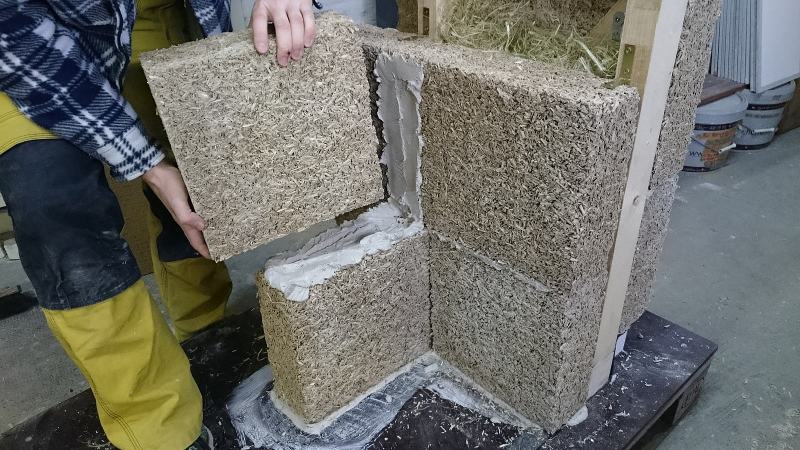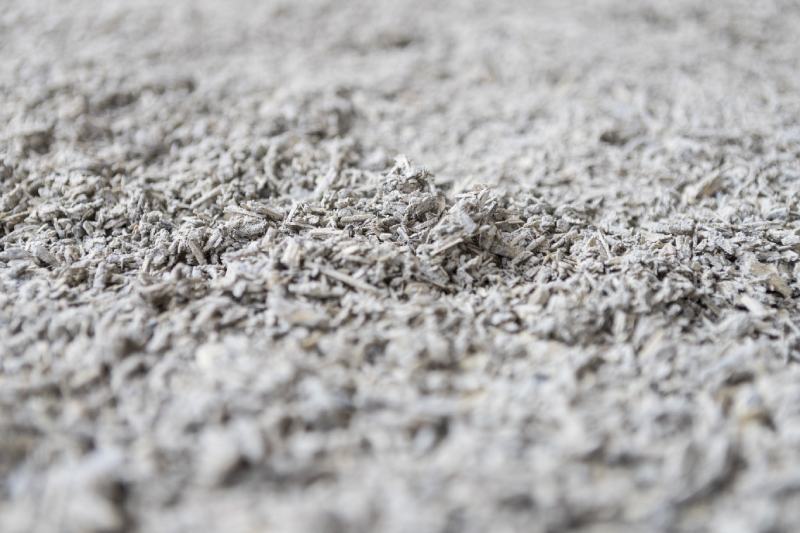Building with Hempcrete: Pros, Cons & 6 Project Examples
-
Greg Iacono
- Last updated:

Of all the building materials available to construct a house, few are as interesting and have as many benefits as hempcrete. Hempcrete is a concrete-like material that’s very different from concrete in some fundamental ways. For example, hempcrete is made from the core of the hemp plant, which is similar to wood, and a binder that’s made from lime. Like concrete, hempcrete can be molded into various shapes and made into blocks similar to concrete blocks.
However, unlike concrete, hempcrete isn’t strong enough to be used as the structural support of a home. If you’re building a home and are curious about hempcrete, its pros and cons, and some projects that have been made with it, read on. Below we have valuable information and links to successful projects that will tell you everything you need to know about this unique building material.
The Advantages & Disadvantages of Hempcrete
There’s no denying that hempcrete is an excellent building material with some advantages that are just as amazing. The hemp plant’s core, called a “shiv,” is surprisingly high in silica. No other plants with natural fibers contain as much silica, and it’s the silica that allows hemp to bind strongly with lime. The result is a material similar to cement but weighs less than ⅙ as much. Hempcrete is so light that a cured hempcrete block will float!
Although much lighter than concrete, hempcrete isn’t nearly as strong and thus can’t be used as the structural support of a house or building. Typical framing methods, including wood and aluminum studs, must be used. Still, because it’s so light, you can build as high as 10 stories with hempcrete with the proper framing techniques. Hempcrete is all-natural and has been used since at least the 6th century in Europe.

Pros & Cons of Building with Hempcrete
- Provides excellent insulation and a high R-value
- Environmentally friendly material
- 100% recyclable
- Extremely durable and long-lasting
- Highly resistant to natural disasters like hurricanes and tornadoes
- Creates an air-tight seal
- Resistant to pests like rodents and insects
- Has an extremely low carbon footprint
- Works well in home additions and renovations
- Is a non-toxic and non-hazardous building material
- Incredibly lightweight
- Harder to find and use than concrete
- It can’t be used as a structural material or load-bearing material
- Not suitable for footings and foundations as it can’t stay wet
- Relatively expensive compared to other building materials
- Reduces the square feet available for living space
- More difficult to work with than concrete
- Not as widely accepted as other materials
Hempcrete Project Examples
1. Morocco’s Sunimplant Hempcrete and Solar Project

This hempcrete and solar project in Morocco is a single-family home that combines the best of hempcrete and solar power. What’s truly interesting is that college engineering students created it for the Solar Decathlon. It’s the first of its kind in the world and was made with the goal of not using any synthetic components.
Compared to the other entrants in the contest, the Morocco “spaceship” house, as it’s been referred to, cost significantly less to build, coming in at a final cost of $120,000. More importantly, all of the materials were sourced locally in Morocco, which kept prices down as materials didn’t need to be shipped in from long distances. The curved outer panels of the Spaceship house were made with hemp wool to improve the performance of the solar panels.
2. Marrickville Hempcrete House
This hempcrete project from Australia was done with some interesting goals in mind, one of which was to comply with acoustic requirements due to a nearby airport. Not only was hempcrete used in the walls of this renovation project, but it was also used in the ceiling to add insulation.
Since the builders completed the renovation, the home uses less energy and stays warmer when the temperatures drop. The homeowners had this to say of their home after the renovations with hempcrete; “The temperature stability is amazing — it makes the house livable, and it’s changed the way we live here. It’s just magical to be in the dining and living area.”
3. Hempcrete Stool

This project shows that hempcrete isn’t just for building homes but also for creating furniture and other items. While admittedly basic compared to some of the other projects on today’s list, this one shows that hempcrete can be used for all sorts of projects. Because of hempcrete’s low weight, while it looks heavy, this stool weighs very little but is sturdy. It only took an hour for the builder to complete the project.
4. Rural Cabin made with Hempcrete
Created in the Czech Republic, this hempcrete house uses the traditional wood stud framing but with hempcrete inside the walls. As the article states, hempcrete was chosen as the building material because it provides excellent insulation, is resistant to fire and pests, and is recyclable. It also features a “green” roof that blends with the surrounding scenery. Again, as with the project in Morocco, most of the materials were sourced locally, bringing down the cost of the home considerably.
5. Hempcrete Panels
In the Netherlands, a student developed these hempcrete panels while researching and looking for an alternative to wood panels. The result was a panel that was all-natural, recyclable, and strong. Like concrete, hempcrete can also be made into an almost unlimited number of shapes and sizes. The strength of the panels comes from the hemp itself, which produces one of the strongest natural fibers on the planet.
6. Hempcrete Insulation for Tiny House
This hempcrete project has a Youtube video showing the complete process of making hempcrete, which is fascinating. The author used the material as insulation in his tiny home on wheels and details how to make hempcrete, why it’s an excellent building material, and much more.
He also stated that he used hempcrete because of its ability to regulate temperature and humidity, which reduces the need for heating and cooling. What’s even more impressive is that the growth rate of hemp significantly outclasses trees. The amount of hemp grown on an acre of land in 4 months equals the same amount of tree growth in 7 years!
- Related Read: Hemp Wood as a Building Material
Final Thoughts
There are several examples of home projects being constructed with hempcrete, but most are outside the United States due to the legal complexities around hemp. That’s due to its connection to marijuana, which is still illegal on the federal level. That’s a shame since hempcrete has been around for centuries, is 100% natural, recycles incredibly well, and its basic ingredients, hemp and lime, are abundant worldwide.
While it might not be popular as a building material right now, one thing is certain; in the next few decades, you’ll start seeing hempcrete more and more in the United States because of its benefits.
Featured Image Credit: Tarun Jami, Shutterstock
Contents

